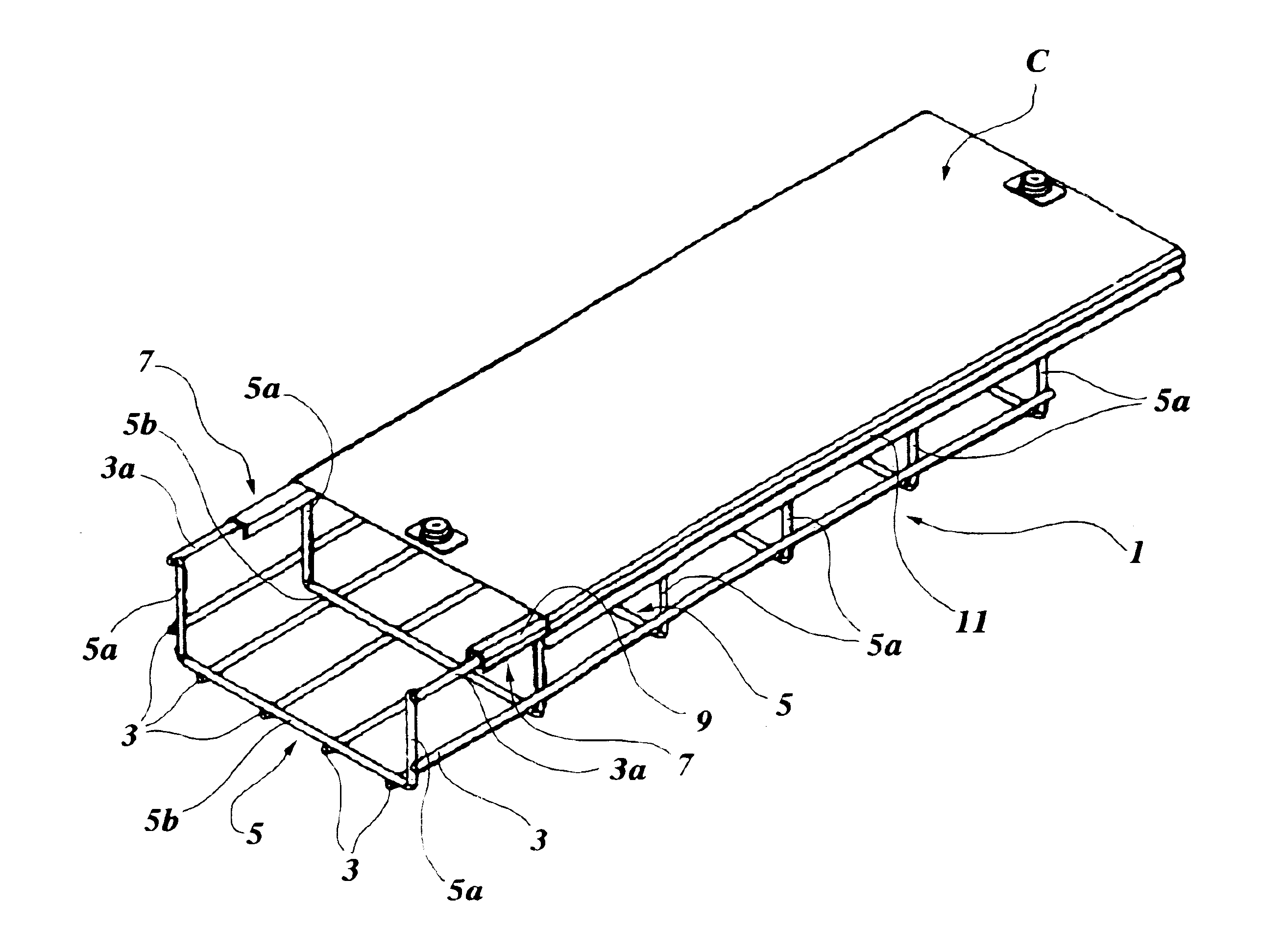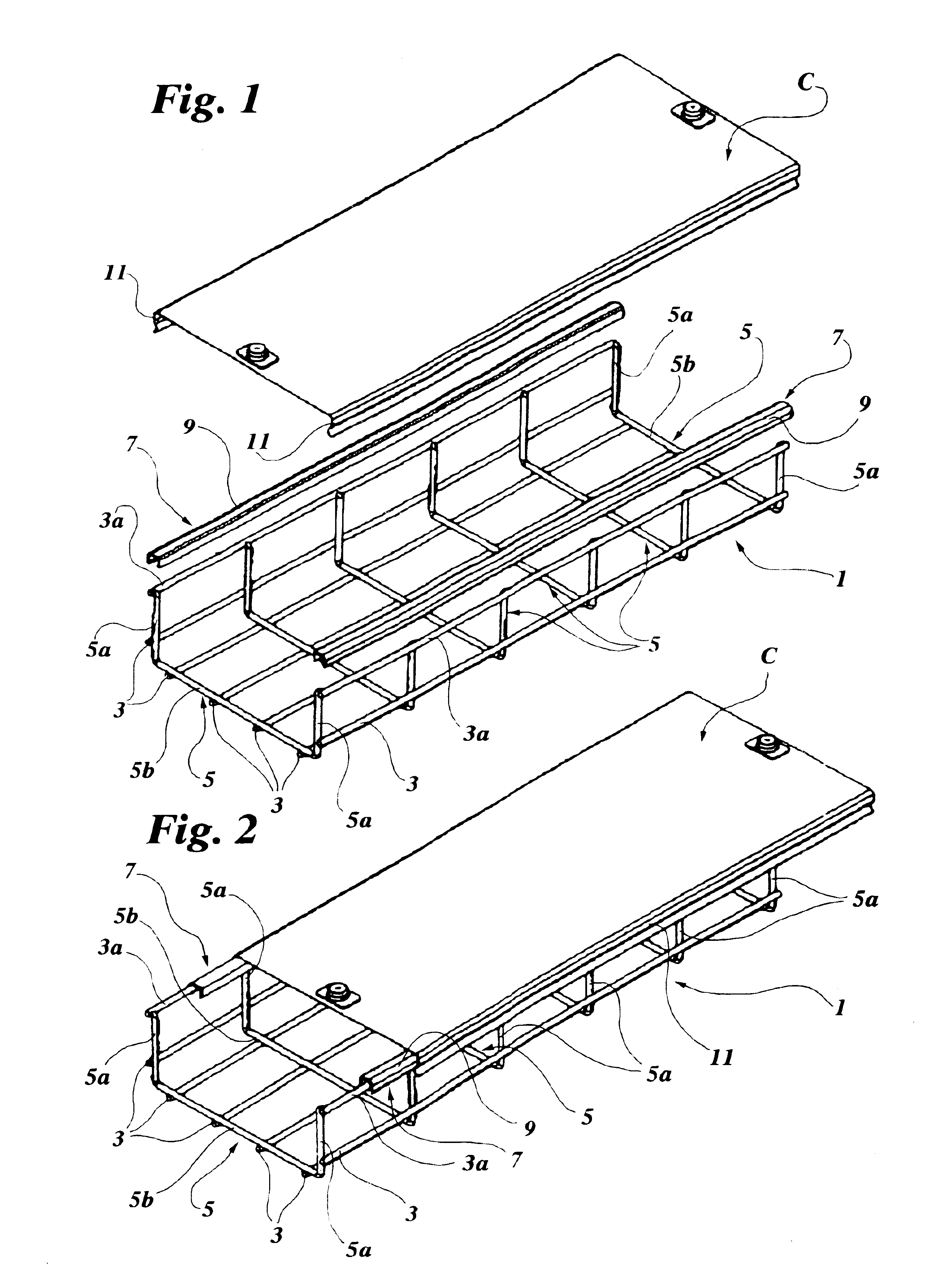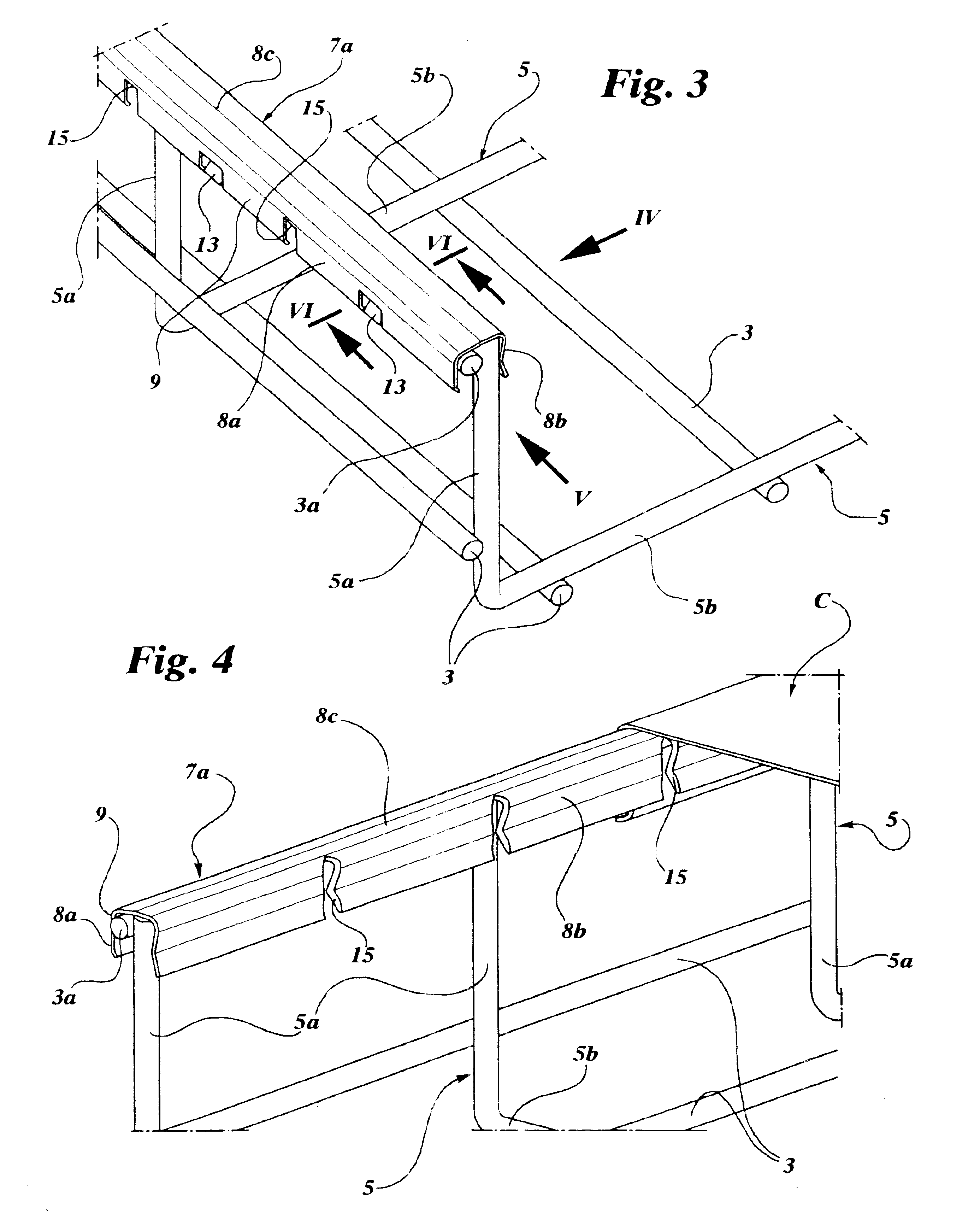Protection member for a mesh cable tray, and a tray including said member
- Summary
- Abstract
- Description
- Claims
- Application Information
AI Technical Summary
Benefits of technology
Problems solved by technology
Method used
Image
Examples
Embodiment Construction
With initial reference to FIGS. 1 and 2, a cable tray 1 of the type generally known as a “mesh” tray comprises a series of longitudinal metal wires 3, 3a and a series of transverse metal wires 5, connected to one another, for example, by electrical welding at nodes to form a grid.
Each of the transverse wires 5 includes a normally straight base portion 5b from which a pair of parallel arms 5a extend transversely relative to the base portion 5b so that each transverse wire 5 is generally U-shaped. The longitudinal wires disposed on the outer sides of the free ends of the parallel arms 5a of the transverse wires 5 are referred to below as “longitudinal edge wires”, and are indicated 3a in the drawings.
In the region of the longitudinal edge wires 3a, the tray 1 has a pair of channel-shaped, profiled protection elements 7 of uniform cross-section, each of which may have a length equal to one section of cable tray. The elements 7 primarily perform the function of covering the free ends of...
PUM
 Login to View More
Login to View More Abstract
Description
Claims
Application Information
 Login to View More
Login to View More - R&D
- Intellectual Property
- Life Sciences
- Materials
- Tech Scout
- Unparalleled Data Quality
- Higher Quality Content
- 60% Fewer Hallucinations
Browse by: Latest US Patents, China's latest patents, Technical Efficacy Thesaurus, Application Domain, Technology Topic, Popular Technical Reports.
© 2025 PatSnap. All rights reserved.Legal|Privacy policy|Modern Slavery Act Transparency Statement|Sitemap|About US| Contact US: help@patsnap.com



